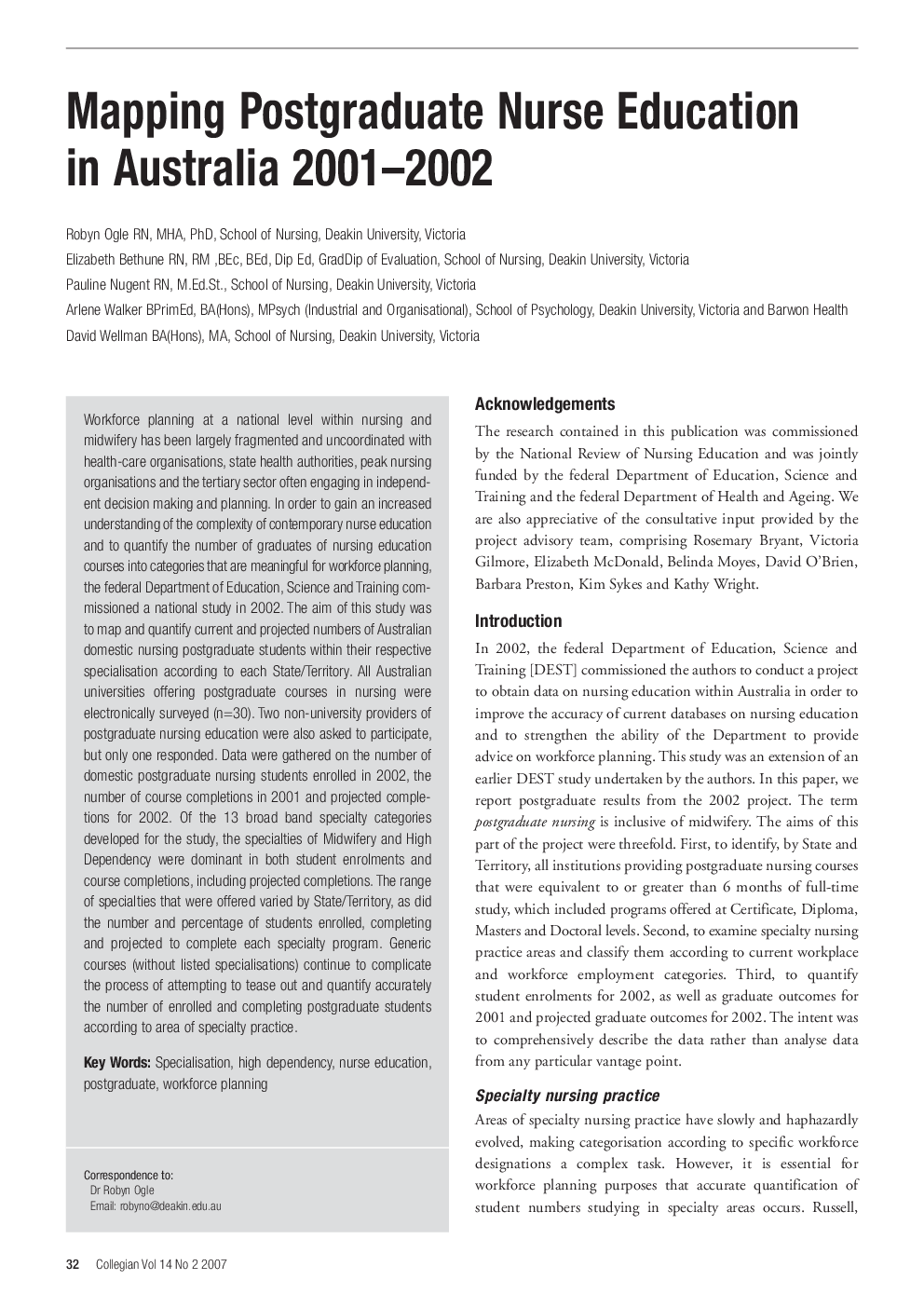| Article ID | Journal | Published Year | Pages | File Type |
|---|---|---|---|---|
| 2646835 | Collegian | 2007 | 9 Pages |
Workforce planning at a national level within nursing and midwifery has been largely fragmented and uncoordinated with health-care organisations, state health authorities, peak nursing organisations and the tertiary sector often engaging in independent decision making and planning. In order to gain an increased understanding of the complexity of contemporary nurse education and to quantify the number of graduates of nursing education courses into categories that are meaningful for workforce planning, the federal Department of Education, Science and Training commissioned a national study in 2002. The aim of this study was to map and quantify current and projected numbers of Australian domestic nursing postgraduate students within their respective specialisation according to each State/Territory. All Australian universities offering postgraduate courses in nursing were electronically surveyed (n=30). Two non-university providers of postgraduate nursing education were also asked to participate, but only one responded. Data were gathered on the number of domestic postgraduate nursing students enrolled in 2002, the number of course completions in 2001 and projected completions for 2002. Of the 13 broad band specialty categories developed for the study, the specialties of Midwifery and High Dependency were dominant in both student enrolments and course completions, including projected completions. The range of specialties that were offered varied by State/Territory, as did the number and percentage of students enrolled, completing and projected to complete each specialty program. Generic courses (without listed specialisations) continue to complicate the process of attempting to tease out and quantify accurately the number of enrolled and completing postgraduate students according to area of specialty practice.
